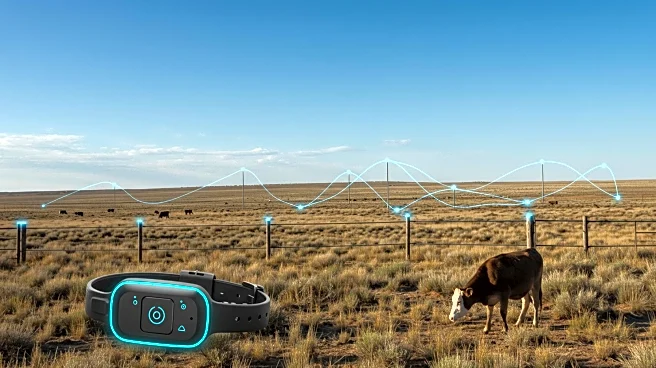What is the story about?
What's Happening?
New Zealand-based Halter has announced a partnership with the Bureau of Land Management (BLM) and its charitable arm, the Foundation for America's Public Lands (APL), to provide virtual fencing technology to more US ranchers. This initiative aims to support ranchers who utilize BLM-managed public lands by offering technical and financial assistance. Virtual fencing technology involves outfitting cattle with wireless smart collars that connect to transmission towers, allowing ranchers to set boundaries and monitor herd activity via an app. This technology offers practical benefits such as reducing the need for physical fences and promoting environmental advantages like improved grazing patterns and biodiversity gains. Halter currently collaborates with 150 ranchers across 18 US states and has established over 128,000 miles of virtual fencing.
Why It's Important?
The partnership between Halter and the BLM is significant as it represents a shift towards more sustainable and efficient ranching practices. Virtual fencing technology can reduce costs associated with building and maintaining physical fences, while also facilitating wildlife migration and enhancing soil health. This collaboration underscores the potential for technology to transform traditional agricultural practices, offering financial and environmental benefits. By supporting ranchers on public lands, the initiative aims to create a blueprint for smarter grazing and thriving ecosystems, which could lead to broader adoption of such technologies across the industry.
What's Next?
The partnership includes a $2.7 million fund from the BLM's charitable arm, APL, to cover initial costs for ranchers adopting Halter's system. Cotoni-Coast Dairies in California is the first recipient, with plans to extend support to numerous ranches across different states over the next year. This wide-ranging plan will demonstrate the potential of virtual fencing technology on public lands, showcasing the benefits of collaboration between government agencies, producers, and technology providers. As more ranches leverage these funds and assistance, the initiative could pave the way for broader implementation of virtual fencing in the US.
Beyond the Headlines
The introduction of virtual fencing technology on public lands highlights the evolving relationship between technology and agriculture. It raises questions about the future of land management and the role of technology in preserving natural ecosystems while supporting agricultural productivity. This development could lead to long-term shifts in how ranchers interact with public lands, potentially influencing policy decisions and encouraging further innovation in sustainable farming practices.
AI Generated Content
Do you find this article useful?

